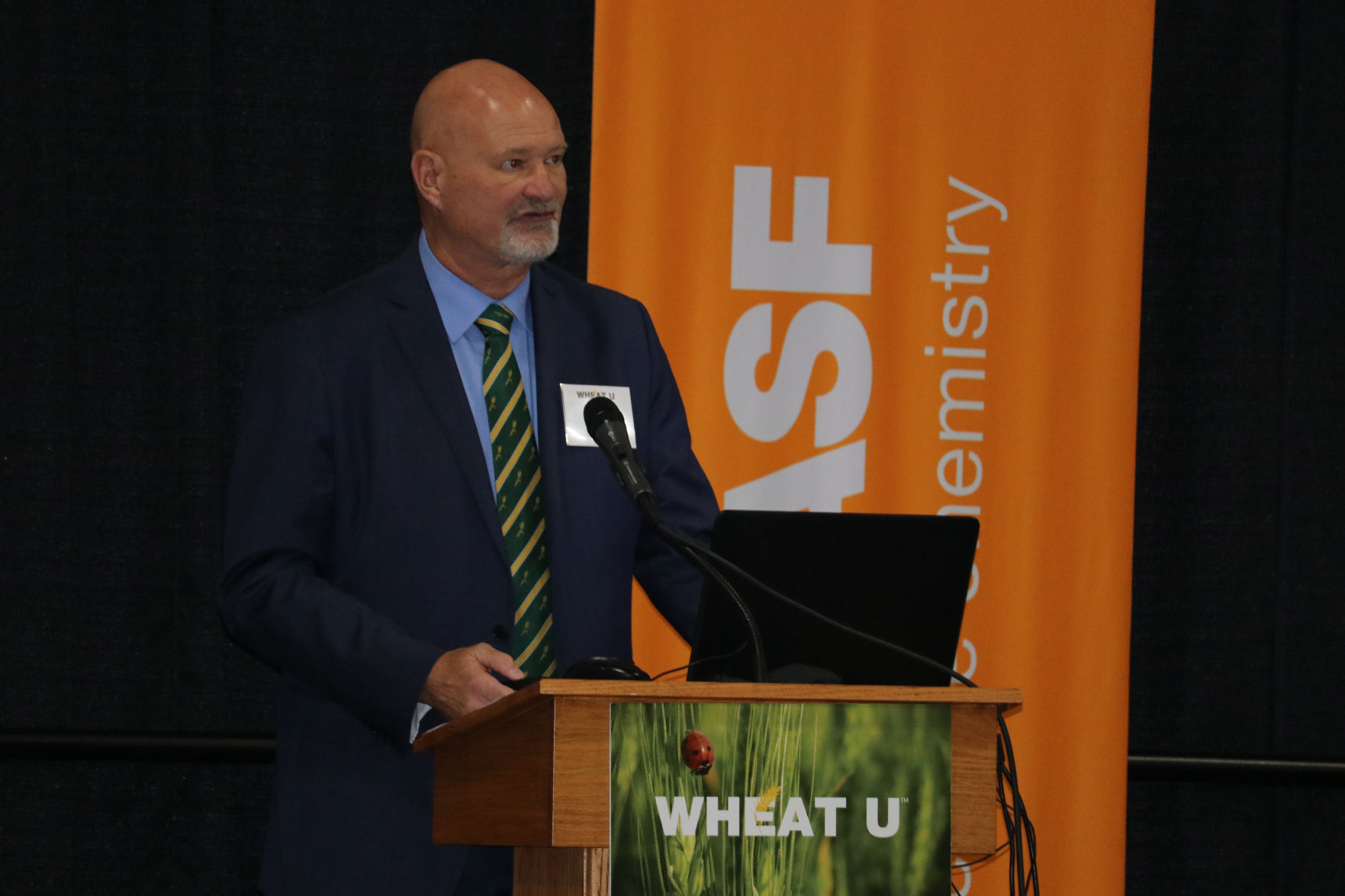Dan Wogsland, executive director of the North Dakota Grain Growers Association, told farmers there are some solid wins for them in the 2018 farm bill.
That is, he added, once the federal government re-opens and U.S. Department of Agriculture staff can get to the heavy lifting of implementation.
Wogsland spoke at the 2019 Wheat U, sponsored by BASF and High Plains Journal Jan. 17, in Bismarck, North Dakota. Northern wheat and barley farmers aren’t the only winners, though, he explained. There are opportunities for farmers across the United States.
“There are a lot of wins in this farm bill, but perhaps most important are the improvements in the ARC and PLC programs,” he said. “There are also improvements in crop insurance. And funding for Market Access Program and Foreign Market Development programs are essential to getting our products sold worldwide. In North Dakota, 50 percent of our wheat has to go overseas.”
ARC/PLC
Farmers now have an opportunity to re-elect between the Agriculture Risk Coverage and Price Loss Coverage programs in 2019, and those elections last until 2021, he said. From 2021 to 2023 farmers will then have the ability to select between the two programs from year to year.
The ARC program still allows farmers to choose between enrolling at the county or individual levels, but there’s been some adjustments made for larger counties, like those of North Dakota and other sparsely populated states.
“Counties larger than 1,400 square miles and that contain 490,000 base acres can split into two administrative units,” he explained. And Risk Management Agency data will be used to calculate payments, instead of National Agricultural Statistics Service data that relies upon farmers’ self-reported survey data. There will also be separate irrigated and dryland yields per county. All of this is supposed to iron out the kinks farmers found in the ARC program in the past four years of the 2014 farm bill.
The PLC program will adjust effective reference prices to more accurately represent the market. Wogsland said farmers should see that the maximum level for wheat should be around $6.33 per bushel and can’t drop below $5.50 per bushel. And there’s now an option to update yield in 2020.
“All of this is pretty confusing,” Woglsand said. “That’s why we recommend you go talk to your local FSA offices and go to the North Dakota State University website and they can tell you individually what these farm bill changes are going to do to you specifically. In this economy we can’t afford to make mistakes.”
Market development
“We know that half of our wheat has to go overseas each and every year,” Wogsland emphasized. “That’s why trade is so important to growers and why we fought for the financing of MAP and FMD.” The farm bill funds those programs at a mandatory $255 million, and also expands the use of those funds to look at expanding agricultural exports to Cuba, which is something that can greatly benefit farmers in the southern Great Plains.
“The Food For Peace is still an in-kind program,” he said. “That’s important because there was an attempt to monetize it. If you did that, then countries could buy wheat from any country, not just the U.S. We want our commodities to go overseas where they are needed the most.”
Crop insurance
“The RMA has been directed to come up with more efficient quality factors that don’t impact a farmer’s APH (Actual Production History),” he explained. “And there’s an ability to combine enterprise units over counties.” All of this means farmers can expect an enhanced and more efficient crop insurance program.
The bill also adjusted the definition of “actively engaged” to include first cousins, nieces and nephews. This is important because we know that the U.S. farm can include multiple generations and multiple branches of a family tree.
Research
“Certainly the funding for agricultural research was a win, such as the U.S. Wheat and Barley Scab Initiative that directly benefits North Dakota farmers,” Wogsland said. “And that’s just so essential for us here, it will really pay dividends.” North Dakota has fought scab and these research dollars can help future farmers find methods that can control or eliminate it all together.
Wheat has a great future in North Dakota, Wogsland said. With the changes in the farm bill not only does it have agronomic benefits for farmers in the state, but there is now a better safety net to count on.
Jennifer M. Latzke can be reached at 620-227-1807 or [email protected].


